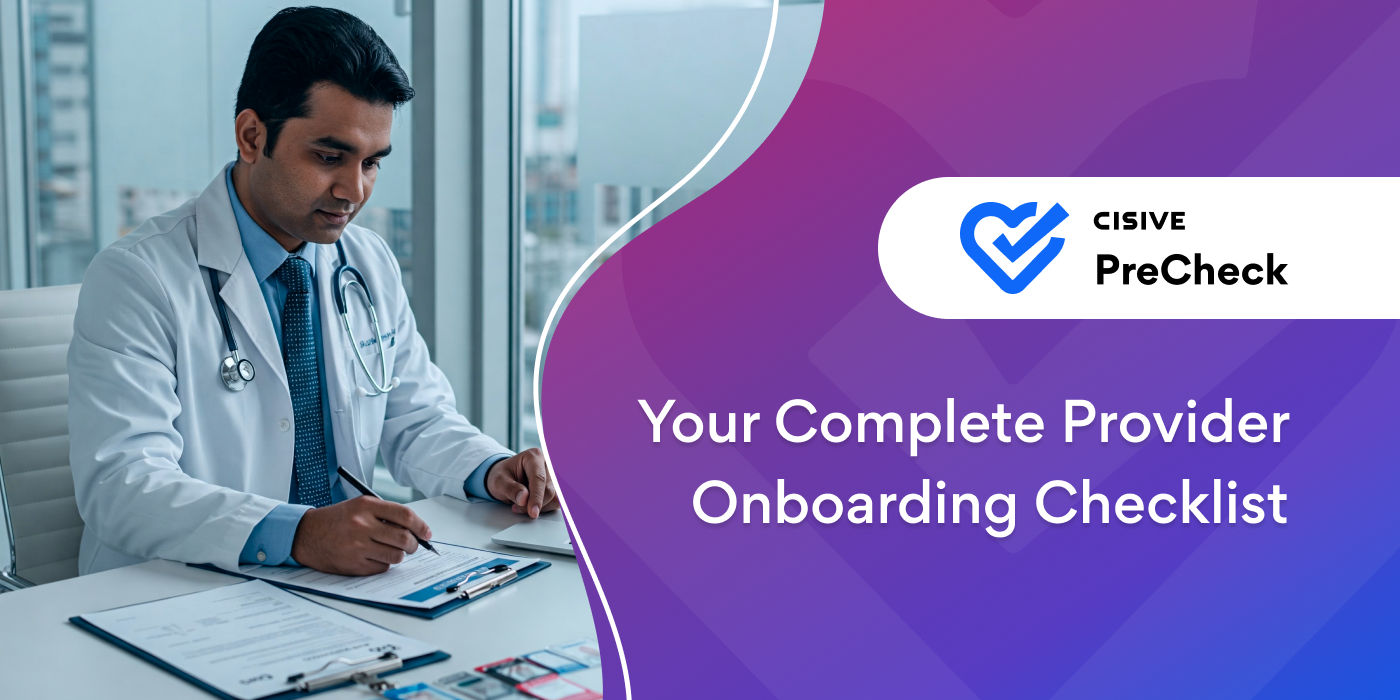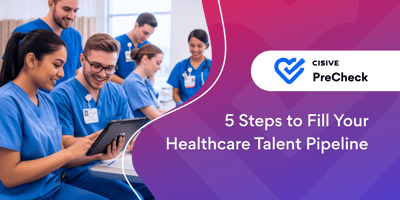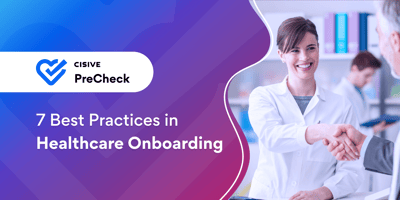

Every hospital wants only qualified, verified providers delivering patient care, which makes the...

Bringing a new provider into your healthcare organization is the beginning of a critical relationship that impacts your team, your patients, and your reputation. But too often, the onboarding process is bogged down by delays, missing documents, or misaligned expectations. That’s where a well-structured provider onboarding checklist makes all the difference.
By following a proven onboarding framework, healthcare organizations can improve time-to-productivity, ensure compliance, and create a better first impression for new hires. Most importantly, it helps safeguard patient safety by ensuring only fully qualified, credentialed providers step into care roles.
Get the free Provider Onboarding Checklist here!
Key TakeawaysHere are the key things you need to know about provider onboarding:
|
In healthcare, effective onboarding is more than a human resources task. It’s a safeguard for patients and a strategic advantage for organizations. A poor onboarding experience can lead to compliance issues, delays in care, and provider dissatisfaction. Providers may even leave for a different opportunity if there are too many delays in the onboarding process. That’s why healthcare organizations are increasingly seeking out proven healthcare onboarding tips to improve their processes.
When executed well, onboarding shortens the ramp-up period for new providers and boosts long-term retention. Effective onboarding reduces time-to-hire in healthcare—an outcome that benefits both providers and patients. Streamlining this process allows providers to deliver care sooner and helps organizations maintain continuity in service delivery.

A robust provider onboarding process covers everything from verification and compliance to training and long-term growth. These components work together to ensure that providers are not only legally and professionally prepared to deliver care, but also equipped to integrate into your organization.
Verifying provider credentials, licenses, and board certifications is the foundation of any onboarding process. Without it, healthcare organizations risk noncompliance with state and federal regulations, payer network requirements, and patient safety standards. This step must include primary source verification of medical licenses, DEA registration, NPI numbers, and specialty board certifications.
Manual verification can be time-consuming and error-prone. That’s why many healthcare employers turn to Cisive PreCheck as a partner for background check compliance in healthcare. As a trusted name in healthcare credentialing and compliance, PreCheck streamlines the verification process, offering automated tools and expert support to ensure nothing slips through the cracks.
Once the credentials are verified, it’s time to equip new providers with the knowledge they need to succeed. Effective onboarding includes training on your facility’s clinical protocols, electronic health record (EHR) systems, patient communication standards, and organizational policies.
Structured orientation reduces the risk of avoidable errors and helps new hires feel confident from day one. Mentorship or shadowing programs are also a valuable component of this stage, helping providers build connections and understand cultural nuances within the team.
Healthcare is constantly evolving, and ongoing education is essential for maintaining high standards of care. Providing new providers with clear access to continuing medical education (CME) opportunities demonstrates your organization’s investment in their growth.
Helpful resources may include CME subscriptions, support for attending medical conferences, and internal workshops on the latest clinical advancements. Promoting lifelong learning not only enhances clinical expertise but also improves provider satisfaction and long-term retention.

Even with a checklist in place, provider onboarding can go off-track. Workplace challenges in healthcare, such as credentialing delays, inconsistent communication, and unclear expectations, can undermine the entire process. Understanding these pitfalls helps healthcare employers proactively avoid them.
The credentialing process often requires coordination with multiple agencies, which can lead to weeks (or even months) of delays. When a provider’s credentials aren’t verified on time, their start date may be pushed back, resulting in coverage gaps and lost revenue.
Using a digital solution like PreCheck to manage this step significantly improves visibility and turnaround times, ensuring the onboarding timeline stays on track.
When communication between HR, compliance, department leads, and providers is disjointed, things fall through the cracks. Miscommunication can lead to frustration, missed deadlines, and inconsistent onboarding experiences.
Centralizing communication and task tracking through onboarding software ensures everyone is aligned and new hires get a consistent, informed experience.
If a provider accepts a role based on a vague or overly optimistic job description, they may feel misled once they begin work. This misalignment can result in early attrition or disengagement.
Ensuring your job postings clearly reflect responsibilities, caseload expectations, and work environment helps attract the right candidates and set realistic expectations during onboarding.
Onboarding doesn’t need to be a manual process. In fact, relying on spreadsheets and email chains introduces unnecessary risks. Software built for provider onboarding can automate key tasks, centralize documentation, and send reminders for important deadlines.
PreCheck’s technology helps healthcare employers manage the full lifecycle of onboarding, from credential verification to background screening. Its integration-ready platform can be tailored to your team’s workflow, helping reduce errors, avoid delays, and stay compliant at every step.
A strong onboarding experience builds a strong care team. With PreCheck’s provider onboarding solutions, you gain a strategic partner in streamlining compliance, accelerating credentialing, and reducing administrative burden. Let us help you build a process that delivers for your team and your patients.
Talk to a Cisive expert today and get started building your customized provider onboarding checklist.

Every hospital wants only qualified, verified providers delivering patient care, which makes the...

The U.S. is on track to face a shortfall of more than 78,000 full-time nurses by 2025, according to...

Imagine you hired a candidate after a search that took months. During that time, the other...